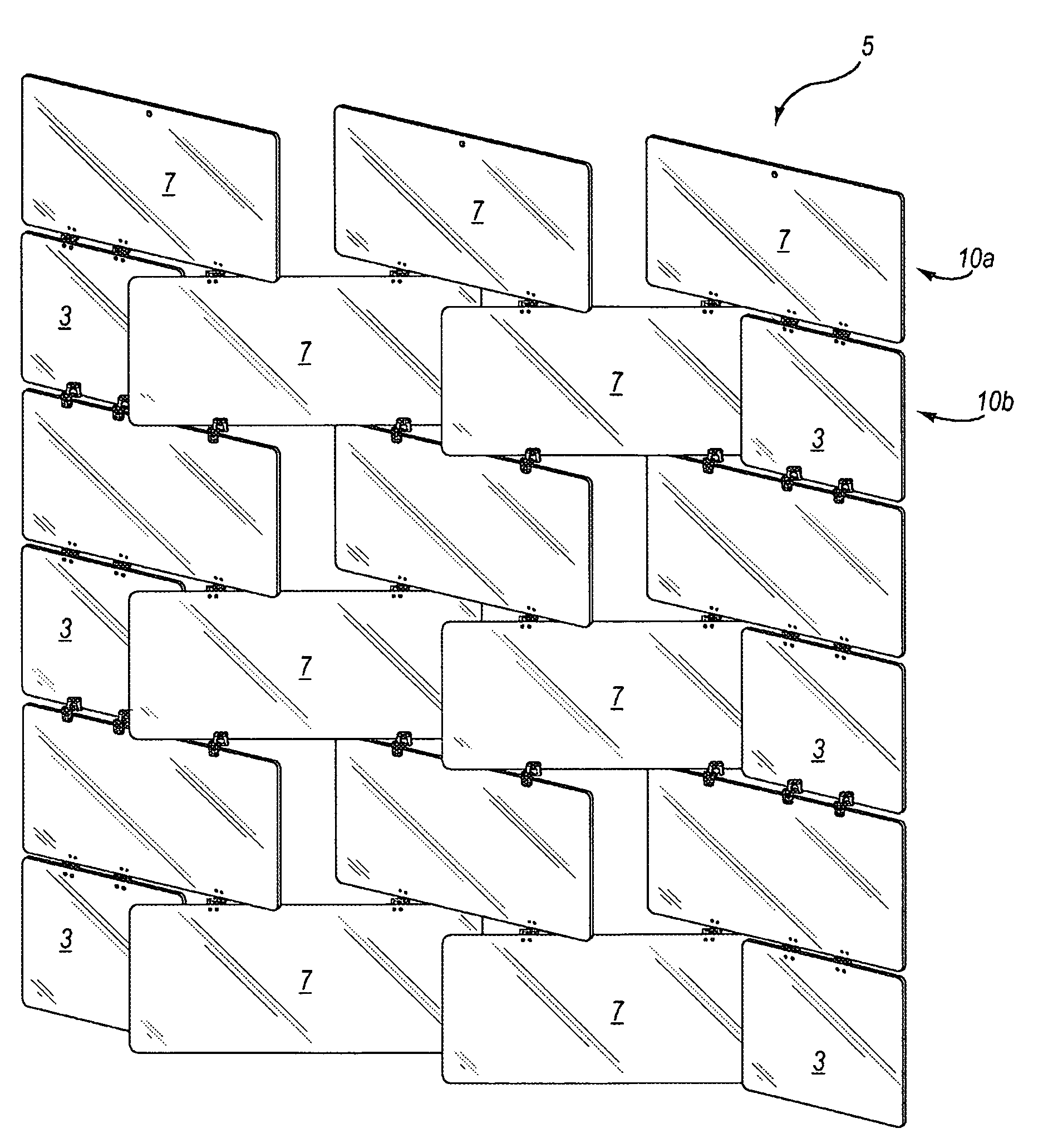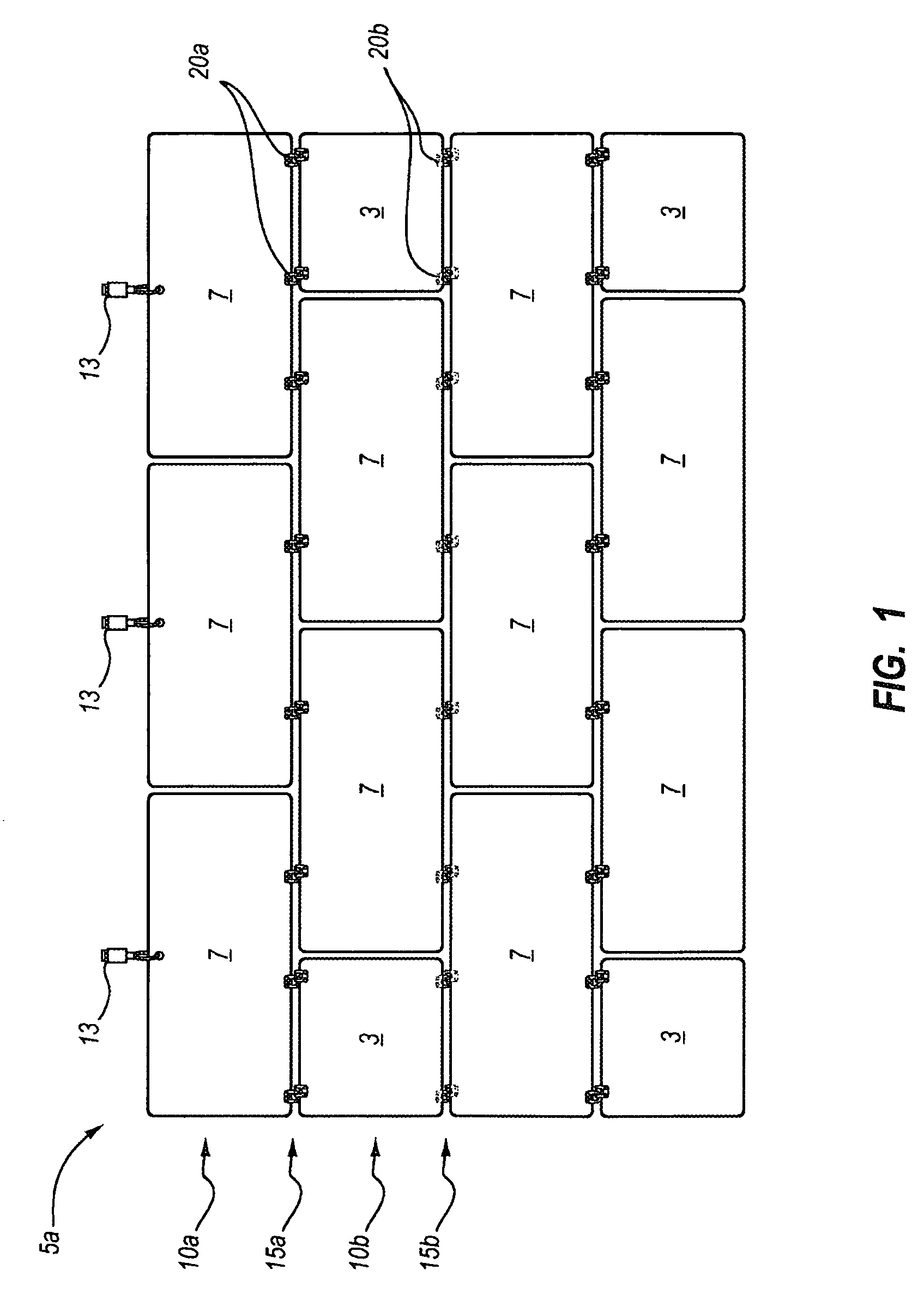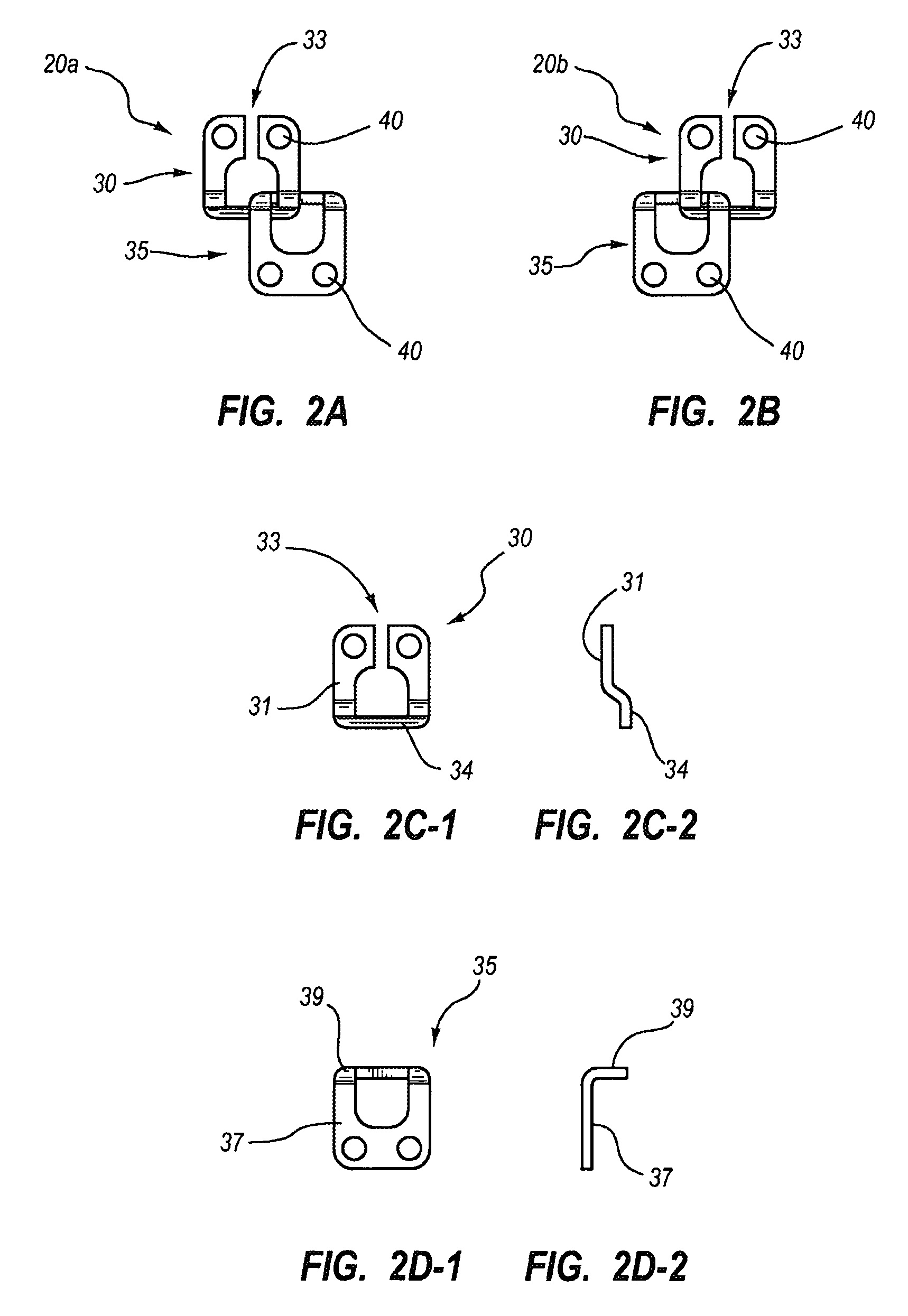Partition with variable-angle tiles
a technology of variable angle tiles and partitioning spaces, applied in the direction of door/window protective devices, curtain suspension devices, wing accessories, etc., can solve the problems of not being readily suited to such flexible partitioning, less useful rigid structure, and not being commonly used as replacement materials for resin materials
- Summary
- Abstract
- Description
- Claims
- Application Information
AI Technical Summary
Benefits of technology
Problems solved by technology
Method used
Image
Examples
Embodiment Construction
[0028]The present invention extends to systems, methods, and apparatus configured to partition a space, or otherwise provide a treatment to a structure, such as a window, ceiling, floor, or wall structure. In one implementation, a tile partition, also referred to as a tile curtain, comprises sets of tiles joined vertically in a staggered row formation, with half-tiles positioned at extreme horizontal edges of every other row. In one implementation, such a configuration allows tiles in the tile partition to be positioned with a flat interface, or angled and / or compressed in a uniform manner, simply by aligning one of the tiles in the partition.
[0029]Accordingly, and as will be understood more fully herein, implementations of the present invention provide a number of benefits for decorative architectural partitions at least in terms of materials, designs, and uses thereof. For example, implementations of the present invention provide a unique partition structure that can highlight the...
PUM
| Property | Measurement | Unit |
|---|---|---|
| rotation | aaaaa | aaaaa |
| shape | aaaaa | aaaaa |
| shapes | aaaaa | aaaaa |
Abstract
Description
Claims
Application Information
 Login to View More
Login to View More - R&D
- Intellectual Property
- Life Sciences
- Materials
- Tech Scout
- Unparalleled Data Quality
- Higher Quality Content
- 60% Fewer Hallucinations
Browse by: Latest US Patents, China's latest patents, Technical Efficacy Thesaurus, Application Domain, Technology Topic, Popular Technical Reports.
© 2025 PatSnap. All rights reserved.Legal|Privacy policy|Modern Slavery Act Transparency Statement|Sitemap|About US| Contact US: help@patsnap.com



